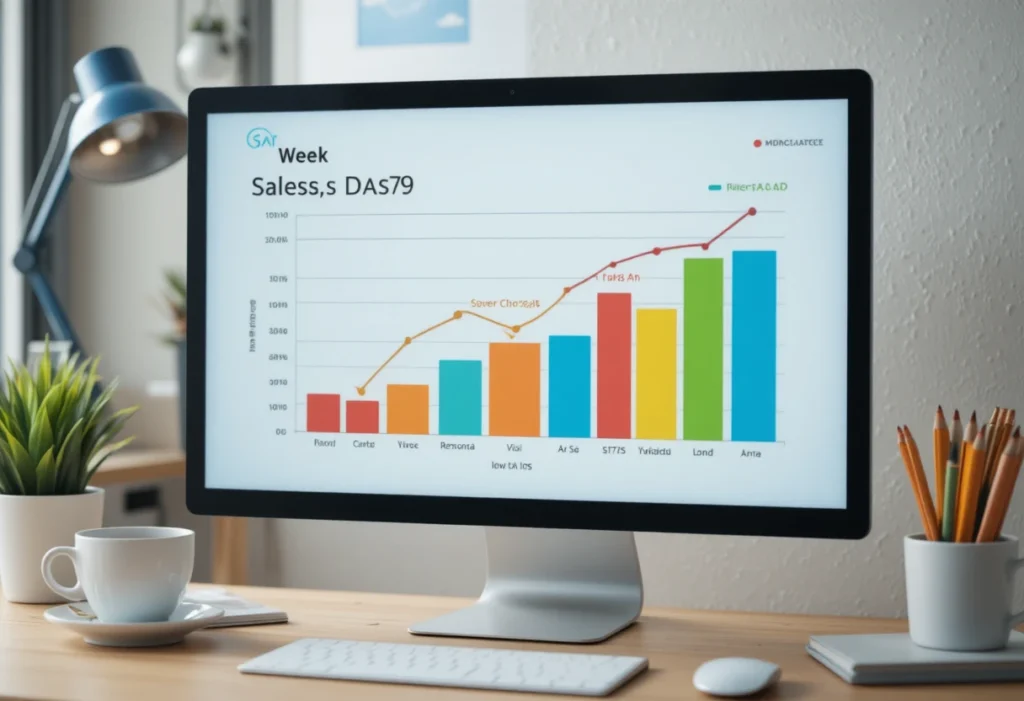Running any kind of business means making decisions every day. Should you order more blue shirts or red shirts? Should you spend more money on social media ads or email marketing? The best answers don’t come from guessing; they come from data. This is where Business Intelligence (BI) comes in. Practicing Business Intelligence Exercises helps you improve your decision-making and problem-solving skills quickly, making you smarter about your business. Let’s first understand what Business Intelligence really means.
What Is Business Intelligence (BI) for Exercises?

Business Intelligence is a simple way of using technology to collect and analyze data from your business so you can make smarter decisions.
Think of it this way: Your business data (like sales records, customer reviews, or website traffic) is a giant puzzle. BI is the tool that helps you put those puzzle pieces together quickly to see the full picture.
BI tools like Power BI, Tableau, and Google Data Studio organize this information. For example, a store uses BI to track which products sell best during the weekend. This simple analysis tells the store manager exactly when to stock the shelves, saving time and money.
Why Business Intelligence Exercises Are Important

Why should you spend time on Business Intelligence Exercises? Because they teach you analytical thinking.
These exercises are like practice drills for your brain. They teach students or professionals how to look at a chart or a report and truly understand what the data insights mean. Instead of just seeing a line going up, you learn why the line is going up. This skill drastically improves decision making in any job. By improving your BI skills, you make yourself more valuable in the job market and ensure your business decisions are always backed by facts, not feelings.
Types of Business Intelligence Exercises You Can Try
You don’t need to be a math expert to start practicing. Here are four simple types of Business Intelligence Exercises you can start today:

a. Data Visualization Practice for Business Intelligence Exercises
Take simple data, like the number of coffees you sold each day last week, and create a basic chart (a bar chart or line graph). This data visualization practice helps you see trends instantly.
b. Dashboard Building as Business Intelligence Exercises
A BI dashboard is a single screen that shows all your most important information at once. Use a free tool to combine three or four simple charts (like sales, expenses, and customer count) onto one page.
c. Data Interpretation Challenges for Business Intelligence Exercises
Find an existing sales report online. Your challenge is to analyze the report and explain, in three simple sentences, why sales changed from one month to the next. This focuses on turning numbers into business action.
d. Real-Life Case Studies for Business Intelligence Exercises
Use a sample business scenario—like a bakery wanting to lower costs—to apply your business analytics skills. Decide which data (ingredients cost, waste amount, employee hours) you need to analyze to solve the problem.
How to Get Started with Business Intelligence Exercises

It’s easy to start practicing Business Intelligence Exercises. You don’t need to buy expensive software:
- Choose a Tool: Use free online BI tools like Google Data Studio (Looker Studio) or Tableau Public. These tools are excellent for beginners.
- Find Datasets: You can find free sample datasets on sites like Kaggle, or simply use data you already have in Google Sheets, such as your personal budget or a fictional sales list.
- Start Small: Don’t try to build a huge BI system on your first try. Start by creating one simple chart—maybe a pie chart showing which categories bring in the most revenue.
- Practice Consistently: Even two to three times a week helps you build real skills and make better business decisions.
Tips for Success in Business Intelligence
To succeed in business analytics, follow these simple guidelines:
- Keep Data Clean: Always make sure your raw data is organized and accurate before you start analyzing it.
- Learn the Basics: Learning basic Excel or Google Sheets skills is the foundation of working with data.
- Practice Visualization: When creating charts, make sure they are clear and easy to read. Your charts should tell a simple, strong story.
- Keep Learning: New BI tools and trends pop up all time. Stay curious and keep learning to maintain your expertise.
FAQs about Business Intelligence Exercises
Q1: Are business intelligence exercises hard for beginners?
Not at all! You can start with simple charts and small datasets. Most tools have easy drag-and-drop features that help you get started quickly.
Q2: Which tool is best for BI exercises?
Power BI and Tableau are powerful industry favorites. However, Google Data Studio (Looker Studio) is free, web-based, and very beginner-friendly.
Q3: Can students learn BI exercises?
Yes! BI exercises help students understand how data is utilized in real-life decision-making across various business areas, including marketing and finance.
Q4: How often should I practice BI exercises?
Even 2–3 times a week is enough to keep your skills sharp and help you build strong analytical skills over time.
Conclusion
Learning to use data is one of the most valuable skills today. By regularly doing Business Intelligence Exercises, you stop guessing and start knowing the right answers for your business. Explore free BI tools, find a small dataset, and practice making one simple chart today. Every chart you create brings you one step closer to becoming a data-driven thinker.
